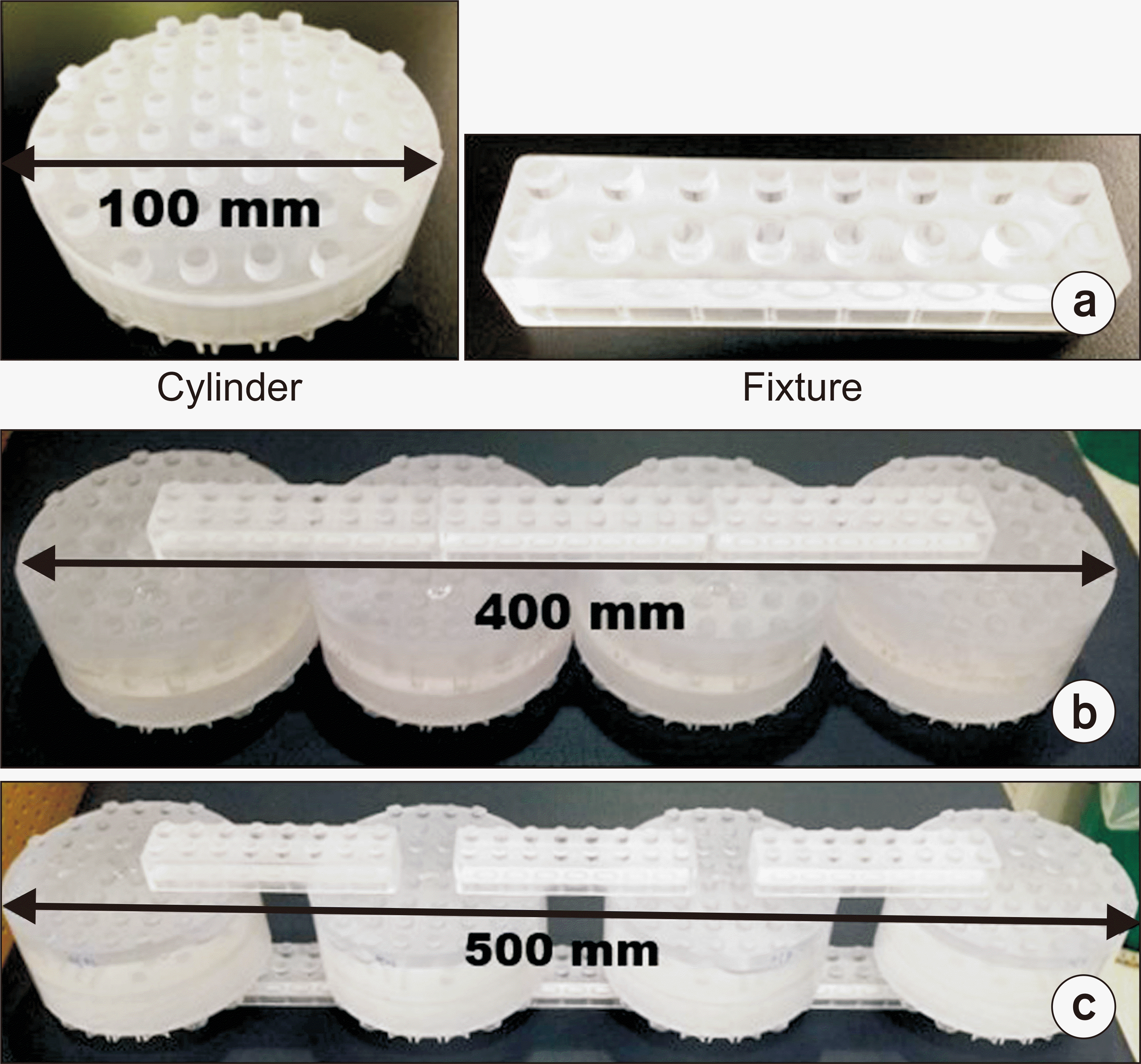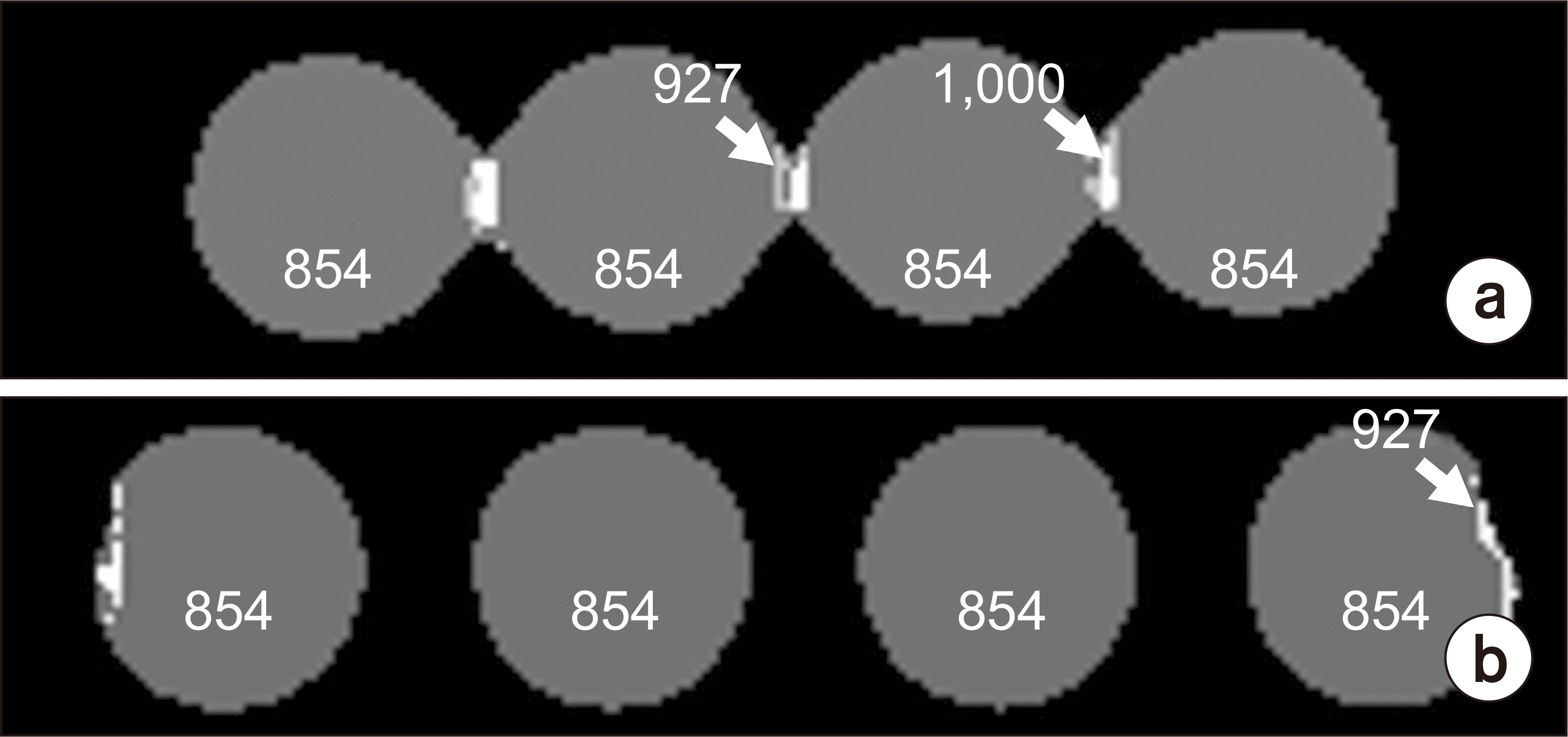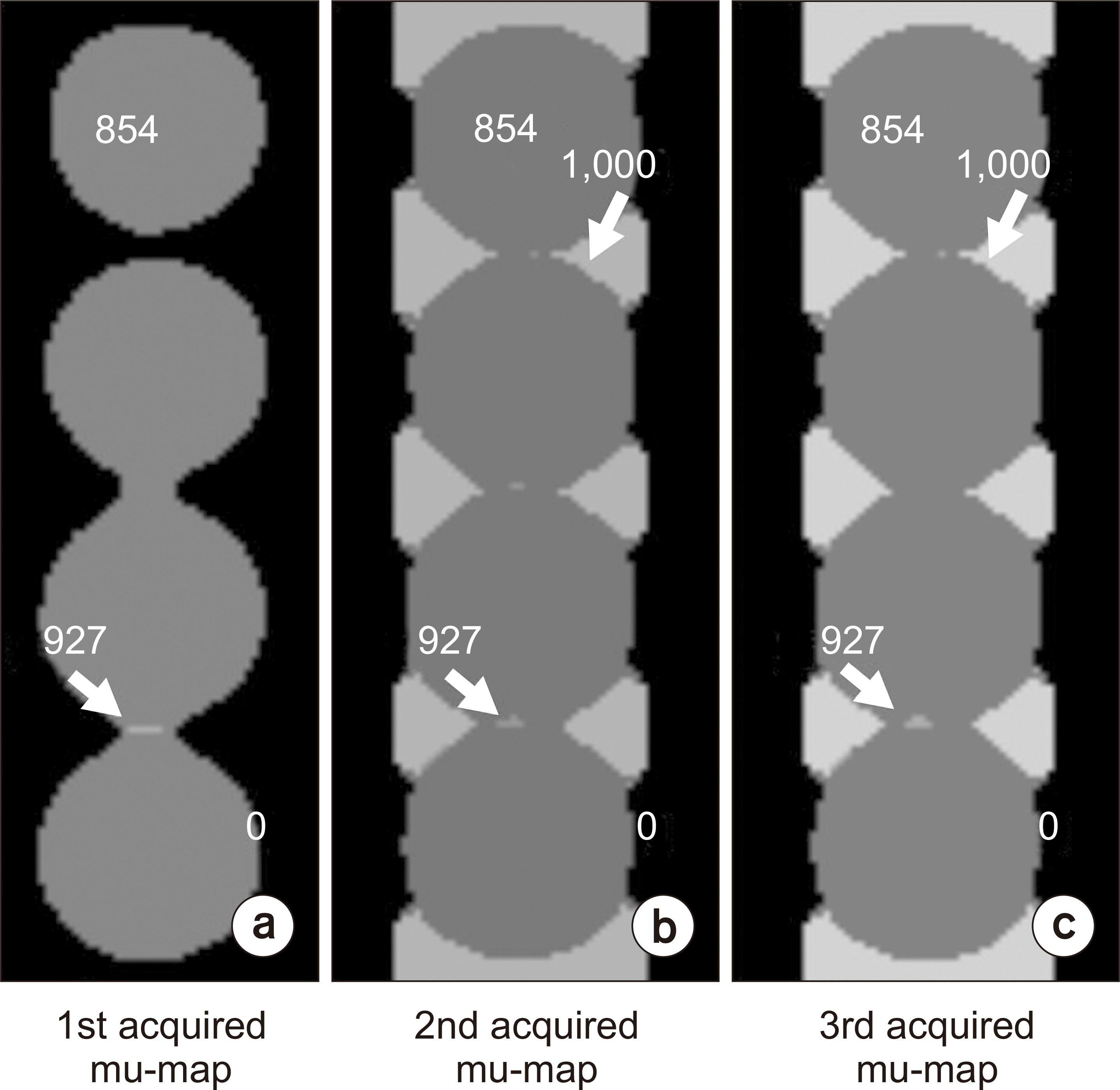1. Bushberg JT, Boone JM. 2011. The essential physics of medical imaging. Lippincott Williams & Wilkins;Philadelphia:
2. Kinahan PE, Townsend DW, Beyer T, Sashin D. 1998; Attenuation correction for a combined 3D PET/CT scanner. Med Phys. 25:2046–2053. DOI:
10.1118/1.598392. PMID:
9800714.

3. Hofmann M, Steinke F, Scheel V, Charpiat G, Farquhar J, Aschoff P, et al. 2008; MRI-based attenuation correction for PET/MRI: a novel approach combining pattern recognition and atlas registration. J Nucl Med. 49:1875–1883. DOI:
10.2967/jnumed.107.049353. PMID:
18927326.

4. Judenhofer MS, Wehrl HF, Newport DF, Catana C, Siegel SB, Becker M, et al. 2008; Simultaneous PET-MRI: a new approach for functional and morphological imaging. Nat Med. 14:459–465. DOI:
10.1038/nm1700. PMID:
18376410.

5. Hofmann M, Pichler B, Schölkopf B, Beyer T. 2009; Towards quantitative PET/MRI: a review of MR-based attenuation correction techniques. Eur J Nucl Med Mol Imaging. 36 Suppl 1:S93–S104. DOI:
10.1007/s00259-008-1007-7. PMID:
19104810.

6. Berker Y, Franke J, Salomon A, Palmowski M, Donker HC, Temur Y, et al. 2012; MRI-based attenuation correction for hybrid PET/MRI systems: a 4-class tissue segmentation technique using a combined ultrashort-echo-time/Dixon MRI sequence. J Nucl Med. 53:796–804. DOI:
10.2967/jnumed.111.092577. PMID:
22505568.

8. Eiber M, Martinez-Möller A, Souvatzoglou M, Holzapfel K, Pickhard A, Löffelbein D, et al. 2011; Value of a Dixon-based MR/PET attenuation correction sequence for the localization and evaluation of PET-positive lesions. Eur J Nucl Med Mol Imaging. 38:1691–1701. DOI:
10.1007/s00259-011-1842-9. PMID:
21688050.

9. Samarin A, Burger C, Wollenweber SD, Crook DW, Burger IA, Schmid DT, et al. 2012; PET/MR imaging of bone lesions--implications for PET quantification from imperfect attenuation correction. Eur J Nucl Med Mol Imaging. 39:1154–1160. DOI:
10.1007/s00259-012-2113-0. PMID:
22526955.
10. Coombs BD, Szumowski J, Coshow W. 1997; Two-point Dixon technique for water-fat signal decomposition with B0 inhomogeneity correction. Magn Reson Med. 38:884–889. DOI:
10.1002/mrm.1910380606. PMID:
9402188.
11. Keller SH, Holm S, Hansen AE, Sattler B, Andersen F, Klausen TL, et al. 2013; Image artifacts from MR-based attenuation correction in clinical, whole-body PET/MRI. MAGMA. 26:173–181. DOI:
10.1007/s10334-012-0345-4. PMID:
22996323.

12. Hofmann M, Bezrukov I, Mantlik F, Aschoff P, Steinke F, Beyer T, et al. 2011; MRI-based attenuation correction for whole-body PET/MRI: quantitative evaluation of segmentation- and atlas-based methods. J Nucl Med. 52:1392–1399. DOI:
10.2967/jnumed.110.078949. PMID:
21828115.

13. Keller SH, Jakoby B, Svalling S, Kjaer A, Højgaard L, Klausen TL. 2016; Cross-calibration of the Siemens mMR: easily acquired accurate PET phantom measurements, long-term stability and reproducibility. EJNMMI Phys. 3:11. DOI:
10.1186/s40658-016-0146-3. PMID:
27387738. PMCID:
PMC4936986.

14. Bezrukov I, Mantlik F, Schmidt H, Schölkopf B, Pichler BJ. 2013; MR-Based PET attenuation correction for PET/MR imaging. Semin Nucl Med. 43:45–59. DOI:
10.1053/j.semnuclmed.2012.08.002. PMID:
23178088.

15. Mehranian A, Arabi H, Zaidi H. 2016; Vision 20/20: magnetic resonance imaging-guided attenuation correction in PET/MRI: challenges, solutions, and opportunities. Med Phys. 43:1130–1155. DOI:
10.1118/1.4941014. PMID:
26936700.

16. Delso G, ter Voert E, de Galiza Barbosa F, Veit-Haibach P. 2015; Pitfalls and limitations in simultaneous PET/MRI. Semin Nucl Med. 45:552–559. DOI:
10.1053/j.semnuclmed.2015.04.002. PMID:
26522396.








 PDF
PDF Citation
Citation Print
Print



 XML Download
XML Download